Restoring old floorboards – Where do I start?
Restoring old floorboards can add plenty of character and charm back into your property.
Our floorboards take a lot of damage and wear over the years and will be in need of some TLC over time. Thankfully, restoring old floorboards is more accessible than ever and even amateur DIY’ers can create a top-quality finish they can be proud of.
In this blog post, we will explore the benefits and drawbacks of restoring old floorboards and provide a step-by-step guide on how to do it yourself.
Is it worth restoring old floorboards?
Restoring old floorboards can be a significant investment of time, effort, and money.
However, restoring old floorboards will also breathe new life into a room and enhance the overall aesthetic appeal of a home. It is also more environmentally friendly than replacing the floors entirely.
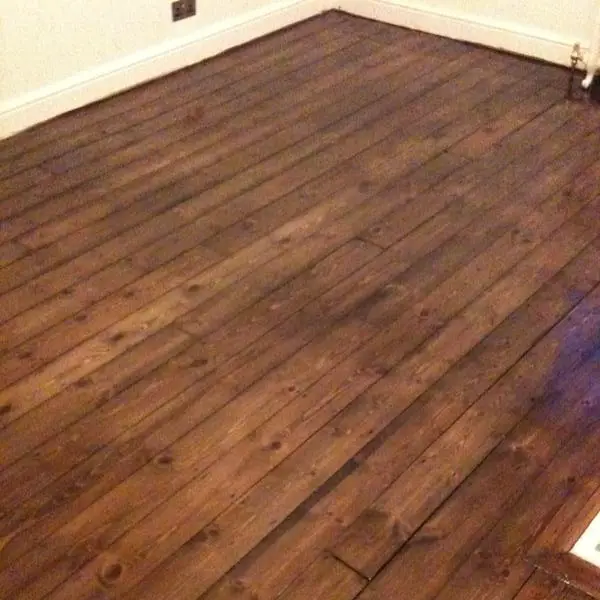
It’s essential to strongly consider whether it’s worth the cost before starting the restoration process. The overall process is not the easiest if you undertake it yourself and will require some determination and perseverance at times.
Restoring old floorboards – Pros and Cons
Pros:
- Durability: Old floorboards are often made of high-quality hardwoods that can withstand heavy foot traffic and last for decades with proper care.
- Aesthetic appeal: Restored old floorboards can add charm and character to a room, creating a warm and inviting atmosphere.
- Environmental benefits: Restoring old floorboards is a sustainable option that avoids the waste associated with replacing floors entirely.
Cons:
- Cost: Restoring old floorboards can be expensive, depending on the extent of the damage and the size of the area to be restored.
- Time-consuming: The restoration process can take several days or even weeks, depending on the condition of the floorboards and the extent of the restoration required.
- Potential for hidden damage: Old floorboards may have hidden damage, such as rot that can be costly to repair. Unfortunately, you will only fully understand the extent of the damage once you begin the project.
Overall, assessing whether restoring old floorboards is worth it depends on the extent of the damage, the size of the area, and the desired outcome.
In some cases, it may be more cost-effective and practical to replace the floors entirely. However, in many cases, restoring old floorboards can be a worthwhile investment that adds value and charm to a home.
Assessing the condition of old floorboards
Before you begin the restoration process, it’s important to assess the condition of the old floorboards to determine if they are salvageable.
First here is a list of tools and materials that you will need for the assessment:
- Flashlight
- Moisture meter
- Hammer
- Flathead screwdriver
- Pry bar
- Safety goggles
- Respirator
It’s best, to begin with, a visual inspection to check for signs of damage and decay.
Look for signs such as rot, warping, or termite damage. You can also check your floors for any loose boards or gaps in between.
Ensuring the subfloor is solid and level is also very important. If the subfloor is damaged, it may need to be repaired or replaced.
Determine the type of wood and the thickness of the floorboards. This information can help you choose the right sandpaper and other tools for the restoration process.
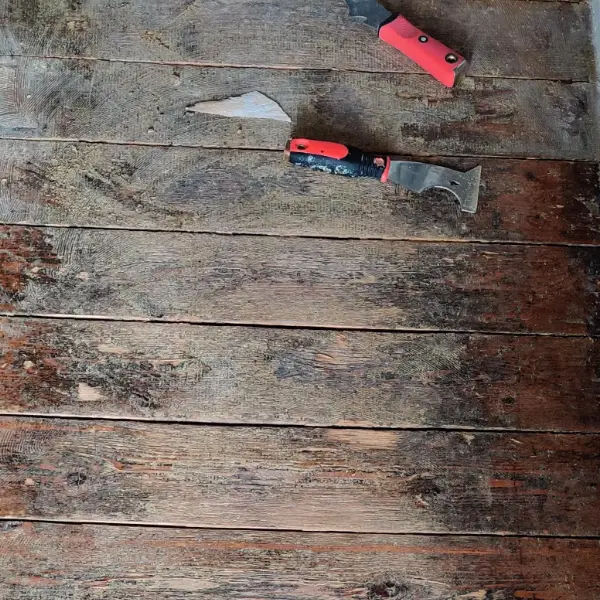
Finally, assessing the current finishes or coatings on the floorboards will help determine your next steps. If there is a thick layer of varnish or paint, it may need to be removed before sanding.
If the floorboards are in good condition and do not have any significant damage, they may be suitable for restoration. If however, there is extensive damage, it may be more cost-effective to replace the floors entirely.
Preparing for restoration
If your old floorboards are in good enough condition to restore you can then begin thinking about the restoration process.
The restoration process can be hard work but you will be rewarded with new charm and character that can not be replicated with modern flooring.
Tools and materials needed for preparation:
- Broom or vacuum
- Mop or cloth
- Mild detergent
- Hammer
- Flathead screwdriver
- Pry bar
- Wood filler
- Putty knife
Here are the preparation steps:
Clean the floorboards: Remove any debris or dirt from the floorboards using a broom or vacuum. Then, use a mop or cloth to clean the floorboards with mild detergent and warm water. It’s important to allow the floorboards to dry completely before moving on to the next step.
Remove nails and staples: Check the floorboards for any nails, staples, or tacks that may be sticking out. Use a hammer, flathead screwdriver, or pry bar to remove them.
Fill gaps and holes: Use a wood filler to fill in any gaps or holes in the floorboards. Allow the filler to dry completely before moving on to the next step.
As with all DIY projects, preparation is the most essential step and will ensure you get the best possible result.
Restoring old floorboards: Step-by-step guide
Restoring old floorboards involves several steps, including sanding, staining, and finishing.
Tools and materials needed for restoration:
- Floor sander
- Sandpaper (coarse-grit and fine-grit)
- Handheld sander
- Wood stain (optional)
- Brush or rag
- Protective finish (polyurethane, varnish, or wax)
- Brush or roller
Here’s our step-by-step guide on how to restore old floorboards:
Sand the floorboards: Use an electric floor sander to begin smoothing your floorboards. Always start with coarse-grit sandpaper and graduate to a finer grit.
It’s important to sand in the direction of the wood grain to avoid damaging the boards. Be sure to sand the edges of the room using a handheld sander or sandpaper.
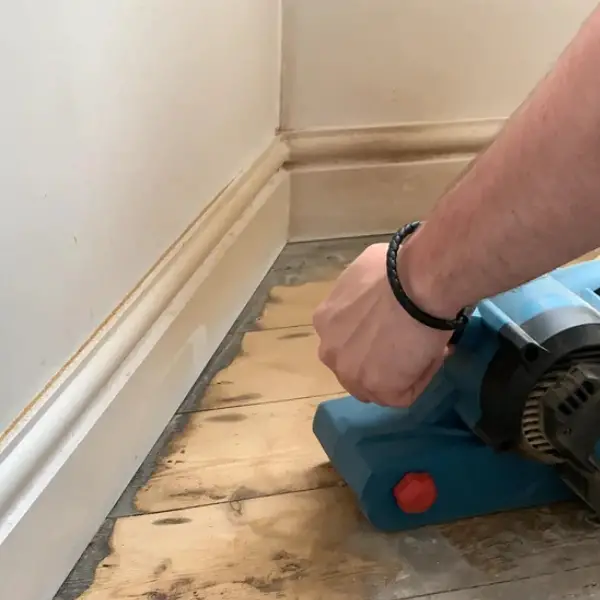
Sanding is the most difficult part of the restoration process but it is where all of the major gains will be made. Removing the old damage from the top surface of the floorboards will help unveil a wonderfully smooth secondary layer.
It’s important to note that ensure your boards are thick enough to withstand sanding during the process’s preparation phase. Hardwood can only be restored a certain number of times over the course of its lifetime.
Staining: If you want to change the colour of the floorboards, you can apply a wood stain after sanding. Apply the stain with a brush or rag, following the manufacturer’s instructions. As always dry completely before moving on to the next step.
Apply a finish: Apply a protective finish to the floorboards, such as polyurethane, varnish, or wax.It’s normally best to use a brush or roller for the cleanest possible finish.
Restoring old floorboards can be a challenging process, but it’s also rewarding. By following these steps and taking the time to prepare the floorboards properly, you can create a beautiful and durable surface that will last for years to come.
Restoring old floorboards – Maintenance
After you’ve taken the time and effort to restore your floorboards it’s important to maintain them to keep them looking their best.
Avoid moisture: With all wooden floors, moisture is a real issue. When cleaning, be mindful to avoid using excessive amounts of water or cleaning products. If you do spill water or other liquids on the floor, wipe them up straight away.
- Clean regularly: sweep or hoover to clean up any loose debris. Unfortunately, homes typically end up with numerous items on their floors, so regular cleaning is optimal.
- Use protective pads: Place felt pads on the bottom of furniture legs to prevent them from scratching the floorboards.
- Avoid high heels: High heels can scratch and dent wood floorboards, so it’s best to avoid wearing them on the floors.
- Refinish as needed: Over time, the finish on your floorboards may begin to wear down. If this happens, you may need to refinish the floors to restore their shine and protect the wood.
Although difficult, restoring old floorboards is a very rewarding process and your home will thank you for it. Nothing quite beats the look and feel of traditional hardwood floors, especially in an old home.
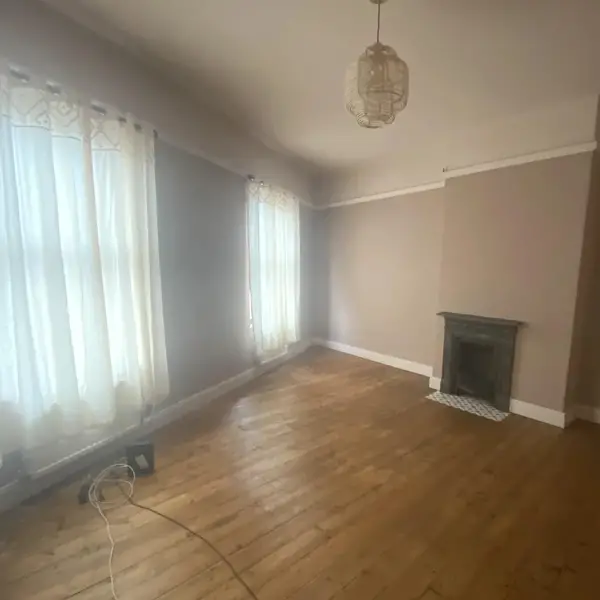
During the restoration, patience is key as the preparation work and each step can take time. You will be rewarded in the end with some beautiful new floorboards.
If you are interested in other renovation projects in your old house, check out our full range of renovating old houses guides.
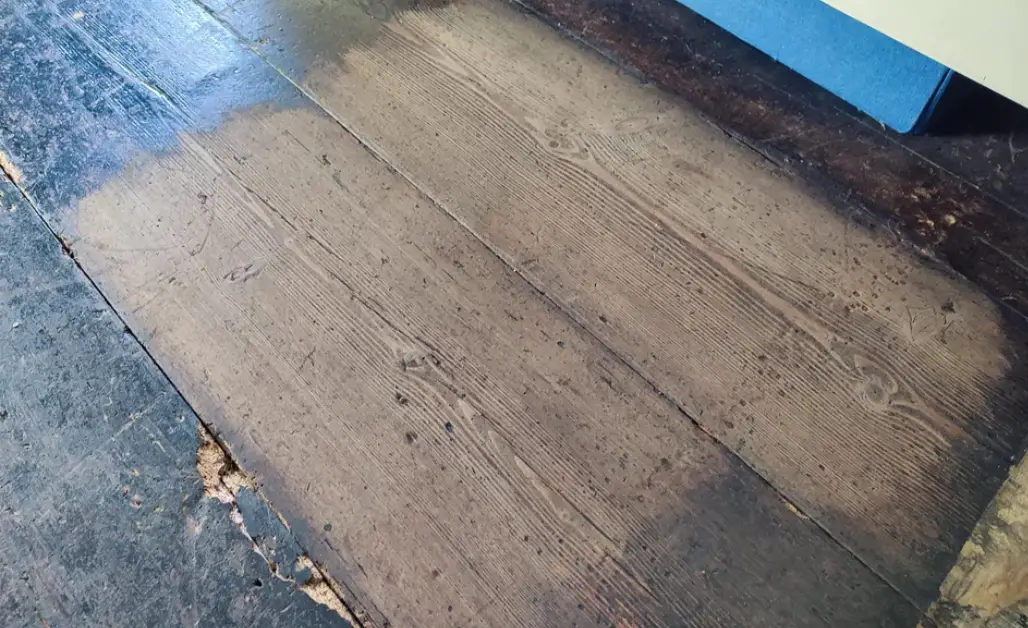
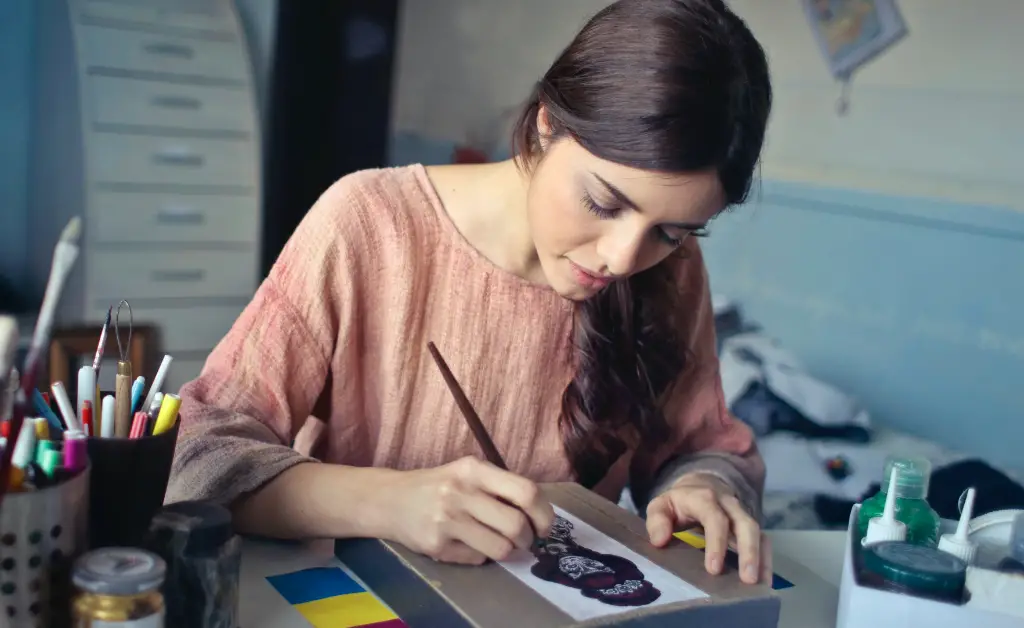

Leave a Reply